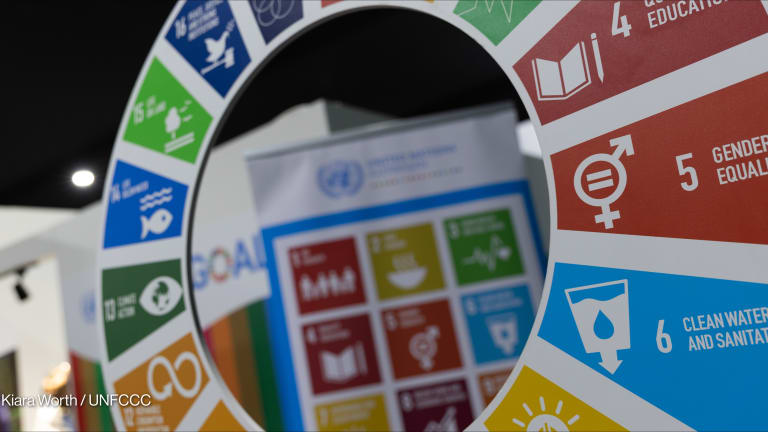
Before COVID-19, data providing insights into gendered experiences was a challenge to come by. In collating an online calculator, launched at the Generation Equality Forum on June 30, Equal Measures 2030 found just five themes with enough data to enable trends to be analyzed and predictions generated: access to modern contraception for married women, girls completion of secondary education, women in government ministerial roles, workplace equality laws, and women’s perceptions of their own safety.
2020 was set to be the year where some of these gaps could be filled — or at least a baseline of information gathered to monitor future progress through national census collections. Acquiring household-level data in a pandemic was a challenge that has caused many censuses to be delayed, leaving gaps in knowledge that would help identify how well countries are progressing on the sustainable development goals, including gender.
“The data missing is not just census data,” Alison Holder, director at Equal Measures 2030, explained to Devex, “ But other kinds of data that normally the World Health Organization and other organizations would publish by now — including Gallup for the financial gender index report. There are so many organizations and United Nations institutions that we are finding are not on the regular timelines for publishing data,” she said.
“We are not moving anywhere near fast enough on gender equality. But then you realize that the data is not taking into account COVID — and that’s when it starts to get scary.”
— Alison Holder, director, Equal Measures 2030The new data challenges created by COVID-19 are being felt by many organizations seeking to understand a range of social and environmental challenges, Holder said.
This conversation has been edited for length and clarity.
How are you considering the impact of the pandemic, and potential lack of data, in how you are planning to design and communicate your next gender index?
Profound data gaps is a common theme.
What’s really interesting with data, when you’re doing research in 2020 and preparing an online tool right now, the takeaway message when you are doing that is that we are not moving anywhere near fast enough on gender equality. But then you realize that the data is not taking into account COVID — and that’s when it starts to get scary in terms of the alarm bells of how things can get even worse.
As we sat in 2020 looking at the data, there were a great number of countries backsliding, including in women’s perceptions of safety for 45 countries. And then we had a pandemic that hit women and girls [hard]. We can’t see that in the data currently, but what we can do is link it with small scale studies to link it with the effects that we see from the pandemic. We are warning that there are more challenges to come by marrying the data of women and girls with their lived experiences.
Knowing that there are growing social challenges, including in domestic violence, has lack of “official data” impacted advocacy, including for civil society or community groups?
With the women’s organizations we work with, we find that the more data skills you have, the better you get at finding that data you need to make your case. For example, a partner in Kenya has used calls to hotlines and frontline services to show a dramatic rise in gender-based violence. The organizations we work with might be successful at the county level and only use data that is applicable to them. But this data is proving valuable in creating accountability.
Your online calculator has data for just five themes. How can you or other people use that for advocacy?
The calculator will serve the needs of individual advocates. We designed this tool because people wanted to see the story on how things are progressing. And it is a mixed picture for countries. In some countries, there are stories of hope, and others see backsliding on issues including access to contraceptives.
More generally, we want the tool to support systemic change. The Generation Equality Forum is focused on systems change. With the backdrop of COVID, this provides the opportunity to look at how systems are creating discrimination. We also want it to be a dialog on the gender data gap — we cannot hold governments accountable very easily simply because we don’t have the data. And the pandemic is making that worse.
To help explain the data gaps COVID is creating, we will be expanding our online tool to guide people through the existing data and signpost resources to direct people to updated information and indicators at a smaller scale. One of the things we are pushing with several partners is a global survey of women’s rights organizations to create a ready sample of people who can offer a pulse perspective on issues as they happen.
It is a concrete way we are trying to fill the data gaps that exist at the census level and something we will need more of as the pandemic continues.






